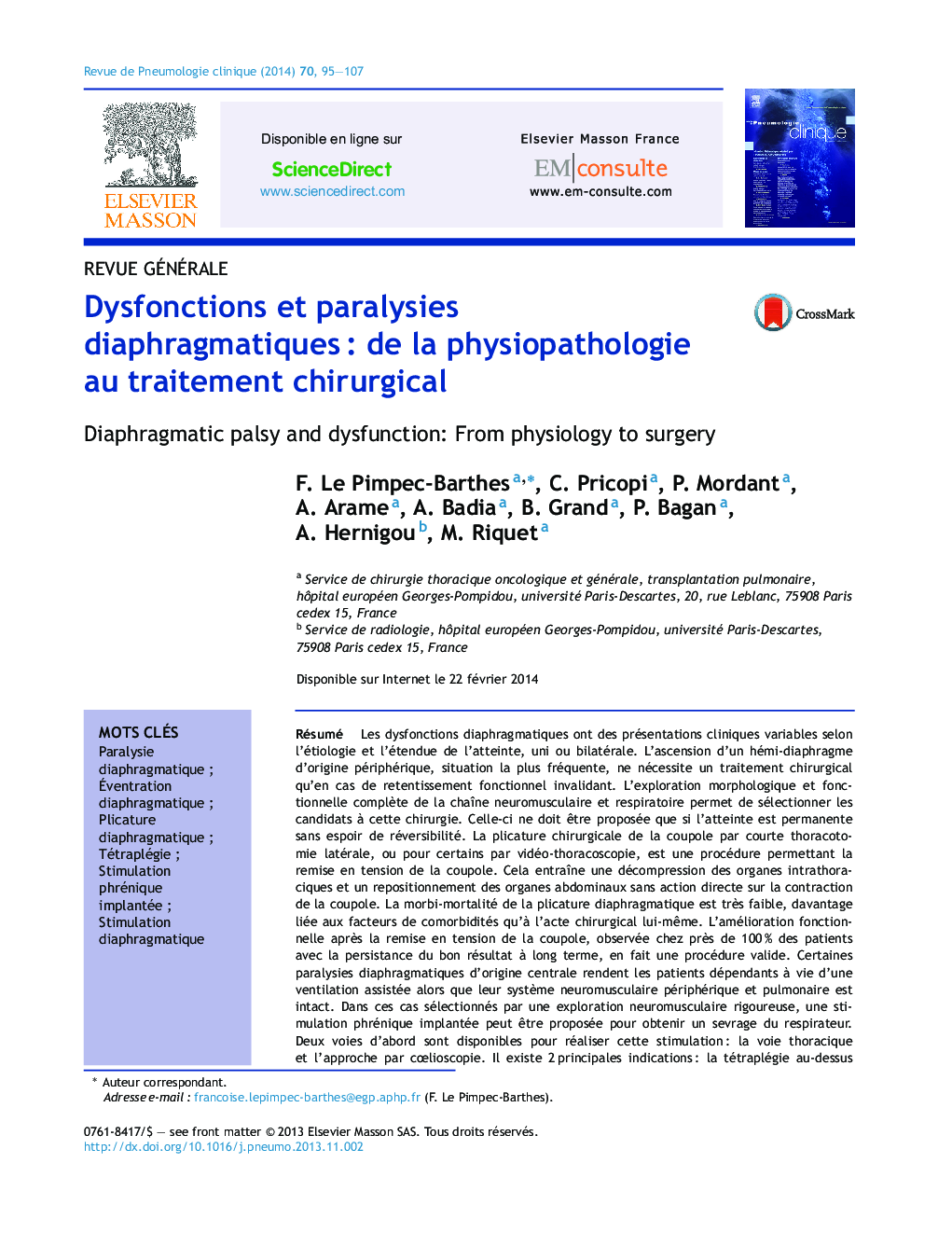| Article ID | Journal | Published Year | Pages | File Type |
|---|---|---|---|---|
| 3419566 | Revue de Pneumologie Clinique | 2014 | 13 Pages |
Abstract
The clinical presentations of diaphragm dysfunctions vary according to etiologies and unilateral or bilateral diseases. Elevation of the hemidiaphragm from peripheral origins, the most frequent situation, requires a surgical treatment only in case of major functional impact. Complete morphological and functional analyses of the neuromuscular chain and respiratory tests allow the best selection of patients to be operated. The surgical procedure may be proposed only when the diaphragm dysfunction is permanent and irreversible. Diaphragm plication for eventration through a short lateral thoracotomy, or sometimes by videothoracoscopy, is the only procedure for retensioning the hemidiaphragm. This leads to a decompression of intrathoracic organs and a repositioning of abdominal organs without effect on the hemidiaphragm active contraction. Morbidity and mortality rates after diaphragm plication are very low, more due to the patient's general condition than to surgery itself. Functional improvements after retensioning for most patients with excellent long-term results validate this procedure for symptomatic patients. In case of bilateral diseases, very few bilateral diaphragm plications have been reported. Some patients with diaphragm paralyses from central origins become permanently dependent on mechanical ventilation whereas their lungs, muscles and nerves are intact. In patients selected by rigorous neuromuscular tests, a phrenic pacing may be proposed to wean them from respirator. Two main indications have been validated: high-level tetraplegia above C3Â and congenital alveolar hypoventilation from central origin. After progressive reconditioning of the diaphragm muscles following phrenic pacing at thoracic level, more than 90% of patients can be weaned from respirator within a few weeks. This weaning improves the quality of life with more physiological breathing, restored olfaction, better sleep and better speech. The positive impact of diaphragm stimulation has also been evaluated in other degenerative neurological diseases, particularly the amyotrophic lateral sclerosis. For either central or peripheral diaphragm dysfunctions, a successful surgical treatment lies on a strict preoperative selection of patients.
Keywords
Related Topics
Health Sciences
Medicine and Dentistry
Infectious Diseases
Authors
F. Le Pimpec-Barthes, C. Pricopi, P. Mordant, A. Arame, A. Badia, B. Grand, P. Bagan, A. Hernigou, M. Riquet,
